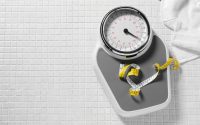UV dryers for manicures can lead to cancer-causing cell mutations: study
Gel manicure fans may want to sit down for this one.
A new study found ultraviolet drying lamps used for gel and shellac manicures damage DNA and cause mutations in cells.
“If you look at the way these devices are presented, they are marketed as safe, with nothing to be concerned about,” study co-author Ludmil Alexandrov, a professor of bioengineering and cellular and molecular medicine at UC San Diego, said in a statement.
“But to the best of our knowledge, no one has actually studied these devices and how they affect human cells at the molecular and cellular levels until now.”
In the study, published this week in the journal Nature Communications, UC researchers analyzed three cell lines: human skin keratinocytes, human foreskin fibroblasts and mouse embryonic fibroblasts.

The findings showed that exposure to the UV light for one 20-minute session caused 20% to 30% of exposed cells to die, while three 20-minute sessions caused 65% to 70% cell death.
The remaining cells weren’t safe from harm either — they suffered DNA damage and mutations, drawing parallels to skin cancer.
“We looked at patients with skin cancers, and we see the exact same patterns of mutations in these patients that were seen in the irradiated cells,” continued Alexandrov.
While research shows that more than 100 million US women use some sort of nail product, it’s unclear just how many opt for gel.
According to the Cleveland Clinic, the risk factor depends on how often the beauty obsessed are frequenting their manicurists, dermatologist Melissa Piliang said in 2021.

Weekly manicure seekers who dry their nails under the lamp for 10 minutes “might want to be worried,” she advised, adding that clients should bring sunscreen to the appointment to apply before using the UV dryers.
While the study authors cautioned that more research is needed to determine the long-term effects of the UV lamps, their results were startling enough for co-author Maria Zhivagui to swear off her own gel polish habit.
“When I was doing my PhD, I started hearing about gel manicures, which last longer than normal polish,” explained Zhivagui, a postdoctoral scholar. “I was interested in trying out gel nail polish, particularly in the setting of working in an experimental lab where I frequently put gloves on and off, to maintain a presentable appearance.”
She said she received gel manicures for years until she saw “the effect of radiation emitted by the gel polish drying device on cell death,” saying she was “surprised.”
“I found this to be very alarming, and decided to stop using it,” she added.
After noticing that people who chronically use gel polish were developing “rare cancers in the fingers,” Alexandrov decided to take on the case himself, realizing very little research had been done in this area.
“Our experimental results and the prior evidence strongly suggest that radiation emitted by UV-nail polish dryers may cause cancers of the hand and that UV-nail polish dryers, similar to tanning beds, may increase the risk of early-onset skin cancer,” the authors wrote, adding that it may take years to determine if these concerns should be the nail in the coffin for these UV light devices.


